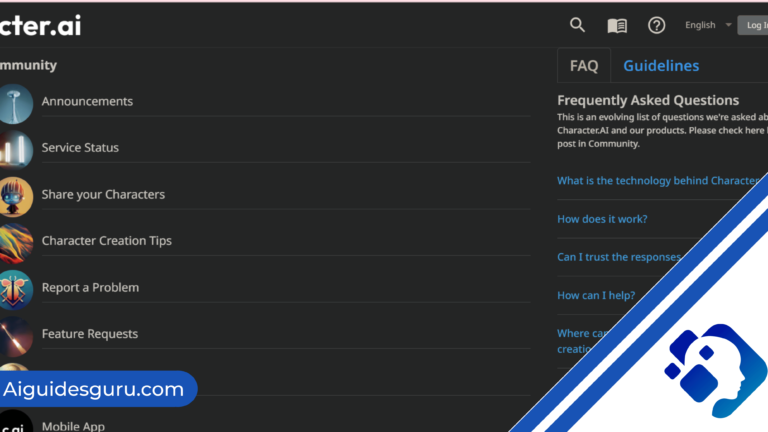When Was ChatGPT Released: A Timeline of the AI Chatbot’s Evolution

Artificial intelligence has come a long way in understanding and interacting with human language. One notable advancement in this field is ChatGPT, an AI-powered chatbot developed by OpenAI. In this article, we will explore the timeline of ChatGPT’s development, from its inception to its present-day capabilities.
The Genesis of ChatGPT
ChatGPT made its debut on November 30, 2022, as a free research preview. OpenAI, a leading organization in AI research, introduced the chatbot to the world, and it quickly gained attention and popularity. Users were fascinated by the chatbot’s ability to understand and respond to a wide range of queries, from travel planning to writing fables and even coding computer programs.
OpenAI was founded in December 2015 by a team of experts including Sam Altman, Greg Brockman, Elon Musk, Ilya Sutskever, Wojciech Zaremba, and John Schulman. Their collective knowledge and passion for advancing AI technology led to the creation of OpenAI, with a focus on benefiting humanity through artificial intelligence.
With time, OpenAI has evolved into a prominent organization in the field, valued at $29 billion and having raised $11.3 billion in funding. In January, Microsoft announced a significant investment in OpenAI to accelerate AI breakthroughs worldwide, further solidifying OpenAI’s position as a leader in the industry.
Milestones in the Evolution of GPT Models
To understand the development of ChatGPT, it is essential to examine the significant milestones in the evolution of OpenAI’s large language models (LLMs), particularly the GPT series. Each version built upon the previous one, showcasing remarkable improvements in language understanding and generation.

GPT-1: The Foundation
In June 2018, OpenAI introduced GPT-1, the first iteration of the GPT series. With 117 million parameters, GPT-1 demonstrated the power of unsupervised learning in language tasks. It used books as training data to predict the next word in a sentence, showcasing the potential of large-scale language models.
GPT-2: Unveiling Text Generation Capabilities
In February 2019, OpenAI released GPT-2, a significant upgrade with 1.5 billion parameters. GPT-2 exhibited a remarkable improvement in text generation capabilities, producing coherent and contextually rich paragraphs. However, due to potential misuse, OpenAI initially refrained from releasing the model to the public, conducting a staged rollout to assess and mitigate risks.
GPT-3: A Major Leap Forward
June 2020 marked the unveiling of GPT-3, a groundbreaking model trained on a staggering 175 billion parameters. GPT-3 showcased the true potential of large language models by excelling in various language-related tasks. It could draft emails, write articles, compose poetry, generate programming code, answer factual questions, and even perform language translation.
The launch of GPT-3 was a pivotal moment, as it provided individuals with the opportunity to directly interact with ChatGPT and experience the power of the underlying LLM. This interaction with a language model of such sophistication highlighted the transformative potential of AI technology.
GPT-4: Continuing the Journey
The latest iteration in the GPT series is GPT-4, which builds upon the previous advancements and pushes the boundaries even further. GPT-4 offers improved model alignment, allowing it to better follow user intentions. It also demonstrates a lower likelihood of generating offensive or dangerous output, emphasizing the importance of responsible AI development. Additionally, GPT-4 exhibits increased factual accuracy and better steerability, enabling users to customize the behavior of the chatbot according to their preferences.
One notable feature introduced with GPT-4 is internet connectivity, enabling real-time searching capability. This enhancement further expands the chatbot’s functionality and information retrieval capabilities.
The Profound Impact of ChatGPT
ChatGPT’s introduction has left a lasting impact on various industries, revolutionizing the way we interact with AI-powered systems. Let’s explore some of the domains where ChatGPT has made significant contributions:
Customer Service Automation
Companies have started leveraging ChatGPT to automate customer service interactions. The chatbot’s ability to understand and respond to common inquiries allows businesses to provide efficient and personalized support to their customers.
Intelligent Tutoring Systems
In the field of education, ChatGPT has paved the way for the development of intelligent tutoring systems. These systems leverage the chatbot’s capabilities to provide personalized assistance and guidance to students, enhancing their learning experience.
Content Creation and Assistance
Journalists, copywriters, and content creators have found value in ChatGPT as a creative tool. The chatbot can generate ideas, draft articles, and even assist in writing poetry. Its language generation abilities enable professionals to streamline their content creation process and explore new creative avenues.
Automation in Business Operations
Professionals across various industries, including business and technology, have embraced ChatGPT to automate tasks. From drafting emails to writing code snippets, the chatbot’s ability to understand and generate text has proven invaluable in accelerating workflows and enhancing productivity.
Healthcare Applications
In the healthcare sector, ChatGPT has found utility in multiple use cases. Medical professionals and staff can utilize the chatbot for clinical decision support, medical recordkeeping, analyzing and interpreting medical literature, and disease surveillance. Its language understanding capabilities assist in managing and extracting insights from vast amounts of medical data.
Entertainment and Gaming
The entertainment industry has also tapped into the potential of ChatGPT. Video game developers can employ the chatbot to generate storylines, write dialogue, and enhance gaming experiences. Additionally, the chatbot’s language generation capabilities have wide-ranging applications in scriptwriting for movies and TV shows.
The Future of ChatGPT and AI Chatbots
As we look toward the future, several factors will shape the trajectory of ChatGPT and AI chatbots in general. Here are some key aspects to consider:
Government Regulation of AI
The future of AI regulation remains uncertain. Governments worldwide may decide to introduce regulations that impact the development and deployment of AI technologies. The challenge lies in striking a balance between fostering innovation and addressing potential risks associated with AI-powered systems.
Lawsuits and Impact on Training Models
OpenAI and other organizations may face legal challenges regarding the use and impact of generative AI tools. The outcomes of these cases have the potential to influence the development and training of future AI models, including those used in chatbots like ChatGPT.
Competition and Innovation
Competitors in the AI space may develop alternative chatbots to challenge the dominance of ChatGPT. However, concerns over government regulation, fear of litigation, and increasing API costs may hinder innovation in this area. The landscape of AI chatbots will likely be shaped by a delicate balance between competition and the evolving regulatory environment.
Conclusion
ChatGPT has emerged as an extraordinary AI chatbot, pushing the boundaries of natural language understanding and generation. Its evolution from the early GPT models to the present-day ChatGPT has showcased the remarkable progress in AI technology. From customer service automation to content creation and assistance, the chatbot has found applications in diverse industries, revolutionizing the way we interact with AI systems.
As AI continues to evolve, it is crucial to navigate the challenges of regulation, legal implications, and competition to ensure responsible and beneficial AI development. With innovations like ChatGPT, we are witnessing a future where AI seamlessly integrates into our lives, enhancing productivity, creativity, and communication.
Frequently Asked Questions (FAQs)
What is the significance of GPT-3 in the development of ChatGPT?
GPT-3 marked a pivotal moment when individuals could directly interact with ChatGPT and experience the power of large language models. It showcased the transformative potential of AI technology and opened doors for various applications.
How has ChatGPT influenced the education sector?
ChatGPT has paved the way for the development of intelligent tutoring systems, providing personalized assistance to students. It enhances the learning experience by leveraging the chatbot’s language understanding and generation capabilities.
What industries have leveraged ChatGPT’s capabilities?
ChatGPT has made a significant impact across various industries, including customer service, content creation, automation in business operations, healthcare, entertainment, and gaming. Its language understanding and generation abilities offer valuable solutions in these domains.






